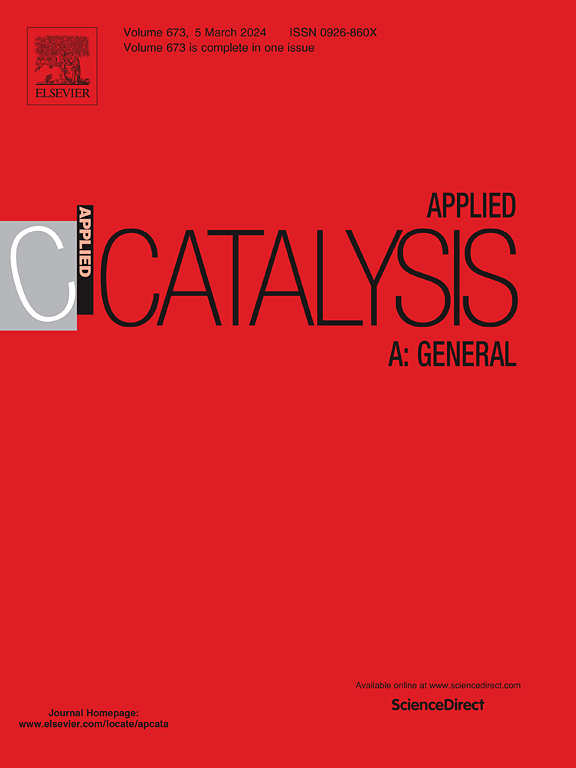Continuous production of aminobenzenes by hydrogenation of nitrobenzenes over a TiO2 photocatalyst in a spiral flow reactor
IF 4.7
2区 化学
Q2 CHEMISTRY, PHYSICAL
引用次数: 0
Abstract
To overcome the disadvantage associated with a photocatalytic suspension reaction system, it is essential to fabricate a flow-type reactor that can eliminate the need for mixing and separation, thereby enabling continuous photocatalytic reactions. We developed a novel flow reactor that consists of a narrow and long perfluoroalkoxy alkane (PFA) tube containing small TiO2-zircon bead composites (TiO2-ZB). The reactor was encircled by a spiral configuration around a fluorescent lamp, facilitating the reduction of nitrobenzene (NB) to aniline (AN). The merits of this novel reactor include the capacity to accommodate a greater quantity of TiO2, the efficacy of light supply to TiO2, and the utilization of a long fluorescent lamp, i.e., black light, as the light source. A comprehensive investigation was conducted to determine the effects of various parameters, including zircon bead size, tube length and flow rate, on photocatalytic performance. Under optimized conditions, various nitrobenzenes having reducible groups can be reduced chemoselectively to the corresponding anilines with high yields. The results presented in this paper provide a new approach to the design of a flow-type reactor for continuous photocatalytic production.
在螺旋流反应器中,二氧化钛光催化剂催化硝基苯加氢连续生产氨基苯
为了克服光催化悬浮反应系统的缺点,必须制造一种流动型反应器,可以消除混合和分离的需要,从而实现连续的光催化反应。我们开发了一种新型的流动反应器,该反应器由窄而长的全氟烷氧基烷烃(PFA)管组成,管内含有小的tio2 -锆石珠复合材料(TiO2-ZB)。反应器以螺旋结构围绕荧光灯,有利于硝基苯(NB)还原为苯胺(AN)。这种新型反应器的优点包括能够容纳更大量的TiO2,对TiO2的光供应效率高,以及使用长荧光灯,即黑光作为光源。研究了锆石珠尺寸、管长和流速等参数对光催化性能的影响。在优化条件下,具有可还原基团的各种硝基苯可以化学选择性地还原为相应的苯胺,收率高。本文的研究结果为连续光催化生产流动型反应器的设计提供了新的思路。
本文章由计算机程序翻译,如有差异,请以英文原文为准。
求助全文
约1分钟内获得全文
求助全文
来源期刊

Applied Catalysis A: General
化学-环境科学
CiteScore
9.00
自引率
5.50%
发文量
415
审稿时长
24 days
期刊介绍:
Applied Catalysis A: General publishes original papers on all aspects of catalysis of basic and practical interest to chemical scientists in both industrial and academic fields, with an emphasis onnew understanding of catalysts and catalytic reactions, new catalytic materials, new techniques, and new processes, especially those that have potential practical implications.
Papers that report results of a thorough study or optimization of systems or processes that are well understood, widely studied, or minor variations of known ones are discouraged. Authors should include statements in a separate section "Justification for Publication" of how the manuscript fits the scope of the journal in the cover letter to the editors. Submissions without such justification will be rejected without review.
 求助内容:
求助内容: 应助结果提醒方式:
应助结果提醒方式:


